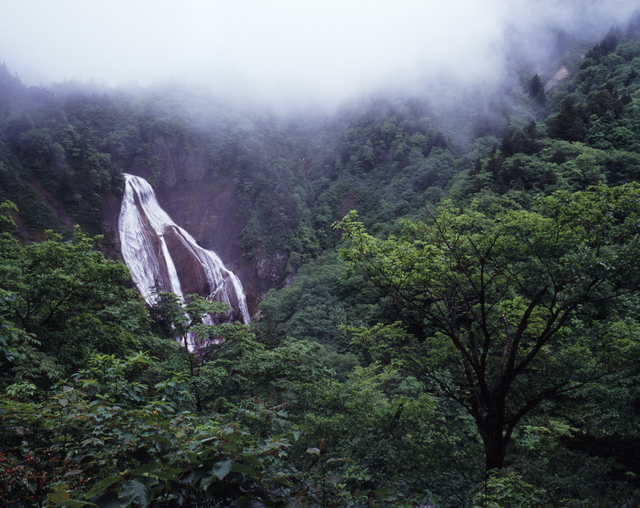
【Tohoku】Five Recommended Spots in Yonezawa, Yamagata Prefecture
Yonezawa City in the southernmost corner of Yamagata Prefecture in the Tohoku Region is known for Yonezawa beef, which is one of Japan's top three brands of wagyu beef. In addition to the great food, it is a place with wonderful historical sites and scenery. This time, we introduce five recommended spots to visit when in Yonezawa.
This post may contain affiliate links. If you buy through them, we may earn a commission at no additional cost to you.
1. Uesugi Jinja
Uesugi Kenshin was a warrior lord and famous hero of the Sengoku Period (end of the 15th century to end of the 16th century) and is much admired to this day. This is a Shinto shrine that was founded in 1876 to honor him. It is still close to the hearts of many Yonezawa citizens and is visited by numerous worshippers who come for the New Year, regular worship, weddings, and to pray for safety. Some highlights are the main shrine and hall of worship made with hinoki cypress, the karamon gate, sukibei fence and Keishoden, the treasure hall with a jyuso-kirizumazukuri roof (a type of roof that looks like an open book that has been placed face down.) It is also famous for the cherry blossoms.

2. Uesugi Family Byosho Graves
This is the burial site of the Uesugi Family, the feudal lords of the Yonezawa Domain. It houses the graves of twelve successive feudal lords, starting with Uesugi Kenshin. It is a popular spot among locals and is referred to affectionately as Otamaya. It is rare for the graves of generations of feudal lords from the beginning to the end of the Edo Period (1603 - 1868) to be in one place. As such, the site was officially recognized by the national government as a historical site in 1984.

3. Toko Sake Museum
Kojima Sohonten, a sake brewery established in 1597 that was the official purveyor to the Uesugi Family of the Yonezawa Domain, is said to be one of the few breweries given special dispensation to brew sake during prohibition. The brewery was reconstructed in 1984 and is now preserved as a museum called Toko no Shuzo. The 1,200 tsubo (approx. 2,967 sq.m.) grounds has 500 tsubo (approx. 1,653 sq.m.) of building space in which there are exhibits of old sake-making equipment and displays showing how sake was traditionally made. There is also an area for sake tasting and retail sales, so be sure to stop by if you are a sake lover. The Kojima Sohonten next door still produces sake and holds tours called "kurabiraki" in the fall, as well as a variety of events.

4. Ubayu Onsen
This is an onsen hot spring area in a steep valley that is high up at 1,300m in altitude on the northside of the Azuma Mountain Range with just one onsen inn called Masugataya. Surrounded on three sides with strangely-shaped rocks covered with virgin forests of Northern Japanese hemlock, Japanese beech and Erman\'s birch, this is an a enchanted hot spring area where wild goat can sometimes be seen. The name derives from the saying that a yamauba (a mythical mountain spirit) was seen bathing with a baby at one time. There are two open-air baths here: One reserved for women, and one that is mixed-gender. The sulphur hot spring water flows freely from the source so you can thoroughly enjoy the onsen experience among the rustic beauty of the valley. The hot springs are available to overnight guests, as well as day visitors.

5. Namegawa Otaki Falls
This is a famous waterfall that is among the top 100 waterfalls of Japan and is known as one of the Tohoku Region\'s largest waterfalls with a height of 80m and a width of 40m. To see the waterfall, walk about 30 minutes from Namegawa Onsen to the observatory on the mountain ridge, then another 40 minutes down to Otaki Valley and across the river to get in front of the waterfall. The sight of the water flowing down the huge slab of rock is outstanding. Once you\'ve enjoyed seeing the waterfall, go to Fukushimaya, the only overnight accommodation in Namegawa Onsen, and enjoy the hot springs. Note that the roads are closed during the winter, so you will have to hike from the station. Fukushimaya is also closed during the winter, so the best time to visit is the spring or summer.

We hope you will refer to this article when visiting Yonezawa, which is blessed with great food, history, and scenery.
The information in this article is accurate at the time of publication.




